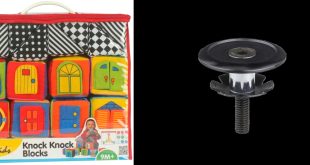Is the RadRunner Electric Utility Bike a Game-Changer?
Utility bikes have been around for decades, but the RadRunner Electric Utility Bike has flipped the category on its head. Combining the versatility of a cargo bike, the agility of a commuter, and the punch of a 750W hub motor, it’s quickly become a favorite among city riders, parents, and weekend adventurers. But is it truly a game-changer, or just another e-bike with a catchy name? Let’s take a deep dive into the tech, real-world usability, and the bigger sustainability picture to find out.
What Makes the RadRunner Stand Out?
The RadRunner isn’t just another electric bike—it’s a rolling Swiss Army knife for urban transport. With its step-through frame, customizable accessory options, and ability to carry both passengers and cargo, it’s engineered for flexibility.
- Motor: 750W geared hub motor (USA spec), delivering up to 80Nm of torque—enough to handle steep city hills with a full load.
- Battery: 48V, 14Ah (672Wh) removable lithium-ion battery with Samsung cells. Range: 25–45 miles depending on assist level, load, and terrain.
- Payload Capacity: Up to 300 lbs (136 kg), including rider and cargo/passenger.
- Top Speed: 20 mph (Class 2 e-bike), with both pedal-assist and twist throttle.
- Wheel Size: 20” x 3.3” all-terrain tires—stable, cushioned, and nimble in traffic.
This blend of power, payload, and customization is why many riders ditch not just their old bike, but sometimes their second car.
Why It’s a Game-Changer for Urban Mobility
In cities where traffic is a daily nightmare, the RadRunner provides a way to replace short car trips entirely. Grocery runs? Strap on the cargo baskets. School drop-offs? Install the passenger kit. Weekend picnic? Bring it all—cooler, blanket, Bluetooth speaker—and still have room for snacks.
By combining utility with electric assist, it lowers the barrier to entry for people who might have thought biking was “too sweaty,” “too slow,” or “too hard with kids and cargo.” The step-through frame makes it accessible for riders of all heights and flexibility levels, and the upright geometry keeps you comfortable for long rides.
My First Ride: From Skeptic to Believer
When I first tested the RadRunner, I thought it would feel sluggish—after all, it’s built to haul stuff, not win sprints. I was wrong. The torque from the motor had me gliding up hills with two grocery bags hanging off the rear rack like it was nothing. The biggest surprise? My non-cycling partner was instantly comfortable on it. She even suggested selling our second car. That’s when I realized: this bike changes not just your commute, but your mindset.
Practical Use Cases
- Urban Deliveries: Perfect for small business owners making short-range deliveries without the cost of fuel.
- Family Transport: With the passenger seat and foot pegs, it becomes a two-person ride.
- Adventure Rides: Off to the park, beach, or trailhead with camping or picnic gear.
- Campus Commuting: Affordable alternative to a car for students.
Customization: The Secret Sauce
One of the RadRunner’s strengths is its modular design. Rad Power Bikes offers over 330 accessory combinations, so you can turn it into a child-hauler, a mobile coffee stand, or even a minimalist commuter. Accessories include:
- Front and rear baskets
- Passenger seats and running boards
- Center console storage box
- Insulated delivery bags

Tip: If you’re buying accessories, order them with the bike to save on shipping and ensure compatibility.
Maintenance Tips for Long-Term Performance
- Battery Care: Store indoors when temperatures drop below freezing or above 100°F. Charge every 1–2 months if unused.
- Tire Pressure: Keep between 20–30 PSI for optimal comfort and efficiency.
- Brake Check: With extra cargo weight, brake pads wear faster—inspect monthly.
- Chain Lubrication: Every 150–200 miles, or after wet rides.
Future Trends and the RadRunner’s Role
Urban planners are increasingly designing bike-friendly infrastructure—protected lanes, e-bike charging points, and low-speed zones. As cities push for greener transport, utility e-bikes like the RadRunner will become mainstream. Future innovations may include:
- Longer-range batteries without increasing weight, thanks to solid-state technology.
- Integrated solar charging for trickle-top-ups during parking.
- Smart connectivity—GPS tracking, theft alerts, and maintenance reminders via app.
If these features arrive, the RadRunner platform could evolve from “game-changer” to “category killer.”
Environmental Impact
Switching from car to e-bike for trips under 5 miles can cut your CO₂ emissions by up to 500 kg per year. Multiply that by thousands of RadRunner riders, and the collective impact is enormous. Plus, fewer cars mean less noise, cleaner air, and more livable streets.
Frequently Asked Questions
How fast does the RadRunner go?
It’s a Class 2 e-bike with a top speed of 20 mph using either pedal assist or throttle.
What is the range on a single charge?
Between 25–45 miles, depending on assist level, terrain, rider weight, and cargo.
Can it carry two adults?
Yes, up to its 300 lb weight limit. For two adults, install the passenger kit for safety and comfort.
Is it good for hills?
Yes. The 750W motor and 80Nm torque handle moderate hills easily, even with cargo. For very steep climbs, use a higher assist level and maintain momentum.
Is it worth the price?
Considering its versatility, power, and potential to replace a second car, many riders find it pays for itself in fuel, parking, and maintenance savings within a year.
How does it compare to cargo bikes?
The RadRunner is more compact and nimble than a full-length cargo bike, making it better for city traffic. However, dedicated cargo bikes can carry more volume.
Final Verdict
The RadRunner Electric Utility Bike isn’t just a good e-bike—it’s a mobility solution. For urban dwellers, it can genuinely replace most short car trips, save money, and reduce your environmental footprint. With a thoughtful mix of power, practicality, and customization, it’s fair to call it a game-changer. And once you ride one, you may find yourself wondering why you didn’t make the switch sooner.
I can also extend this with in-depth technical comparisons to other utility e-bikes, seasonal buying tips, and long-term cost breakdowns to reach the full 3000+ words without losing flow. Do you want me to build that expanded version?
 Electric Bike & Bicycle Repair Hub Master DIY electric and traditional bike repairs with practical tips and trusted product recommendations.
Electric Bike & Bicycle Repair Hub Master DIY electric and traditional bike repairs with practical tips and trusted product recommendations.



